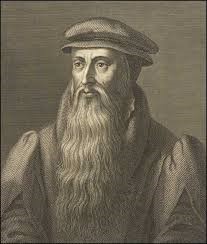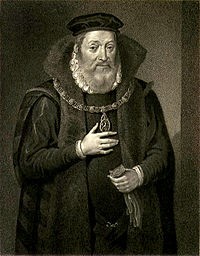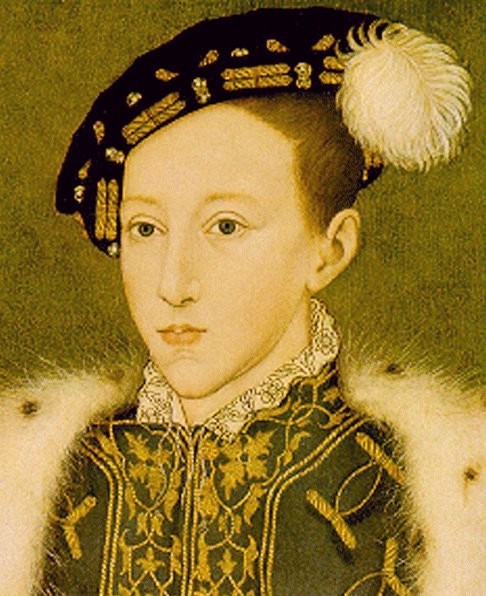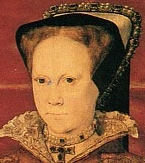Regent Moray: Life Story
Chapter 2 : Youth
A week after the birth of Mary, disaster struck Scotland when James V died at the age of 30. Lord James was around 11 years old, and, together with all his siblings, faced years of uncertainty as the weak Regent, the Earl of Arran, tried, first, to work with the English, then, as their demands became too great, reverted to the traditional alliance with France, whilst the Dowager Queen Marie, and Cardinal Beaton also tussled for control of the country.
During these years, the Protestant Reformation began to gain a toe-hold in Scotland. It advanced particularly swiftly in Fife, the area in which the primary bishopric, that of St Andrew’s, was based, and where, in theory, Lord James himself was Prior of the Abbey. It was at St Andrew’s that the first great Scottish Reformer, George Wishart, was burnt in 1546, but not before spreading his message to other converts, including John Knox, who was to play an important part in Lord James’ life.

That Lord James remained within Court circles after his father’s death seems to be confirmed by the fact that, in 1548, when the young Queen Mary was sent to France for her upbringing, under the protection of Lord Erskine, James’s grandfather, James himself accompanied her. He was by now around 18 years old and, after Mary joined the court, he went to study at the University of Paris, although he does not seem to have stayed long in France.
In 1551 Lord James visited France again as part of the entourage who accompanied the Queen Dowager, Marie of Guise, on her visit to her daughter. He would therefore have passed through England on the return journey and it was probably then that he first made the acquaintance of the John Knox, who, following a punishment stint in French galleys, was chaplain to Edward VI. This may have been the point when Lord James himself began to take an interest in the Reformed faith.
Scotland was still unsettled – although the English had given up the idea of conquering the country by force, there were growing factions within the Scottish nobility who saw an alliance with an England, becoming increasingly Protestant under Edward VI, as preferable to domination by Catholic France. Nevertheless, it would not be true to say at this point that the divisions were on religious grounds – there were Protestants who favoured a French-inclined policy, and Catholics who disliked it.

In May 1553, it was reported in a letter by the Imperial Ambassador, Jehan Sheyfve, that, in an effort to get rid of the Regent, the Duke of Chatelherault (despite the French title, this was James Hamilton, Earl of Arran), Marie of Guise was proposing Lord James as Regent for his half-sister. Although the letter is usually assumed to refer to Lord James, as noted before, he had an older half-brother of the same name, and Scheyve may have been referring to him, given that Lord James was only twenty-two. He did, however, have a close relationship with Marie of Guise, and when she was finally appointed as Regent he worked closely with her.

South of the border, the Calvinist-inspired government of Edward VI had been replaced by the Catholic regime of his sister, Mary I. The control of Scotland and England by two Catholic women did not in any way lead to a political rapprochement between the countries. Mary of England was innately suspicious of any pro-French Scottish government, and, once married to the King of Spain, was supportive of the Spanish-Imperial side in the interminable Franco-Spanish conflict, whilst Marie, was, naturally, supportive of the Scottish-French alliance cemented by the marriage of her daughter Mary, Queen of Scots to the French Dauphin.

Marie of Guise also differed, initially, from her English counterpart in having a less hard-line attitude towards religious conformity. The Catholic counter-revolution in England led to a number of Protestant preachers taking exile in Scotland and their following was growing. Marie of Guise was by nature inclined to tolerance and whether from a genuine dislike of persecution or for political expediency, no attempts were initially made to combat the growth of Protestantism. In fact many even believed that she herself might convert.
One of these returning exiles was none other than John Knox. He arrived in Edinburgh in September 1555 and met a number of leading Protestants, including John Erskine of Dun, and William Maitland of Lethington, who was secretary to Marie of Guise. Maitland was a strong supporter of alliance between England and Scotland and opposed to French dominance.
Another convert was James’ uncle, John, 6th Lord Erskine. James himself had not yet firmly joined the Protestant group, he was still attending Mass with his stepmother. Nevertheless he was sufficiently impressed with Knox to add his voice to the other lords who were encouraging Knox to preach publicly in Edinburgh. Edinburgh was still too Catholic for such a scheme to be possible but at Easter 1556, Knox preached publicly for the first time in Scotland at Calder.
Lord James Stewart
Family Tree






